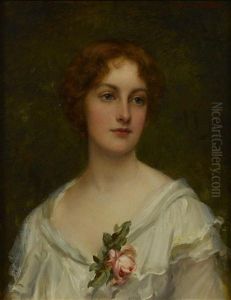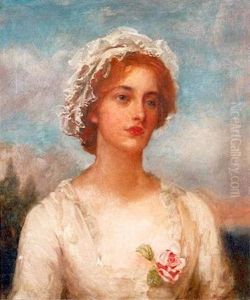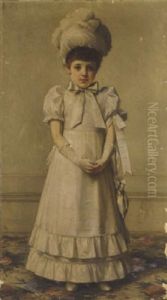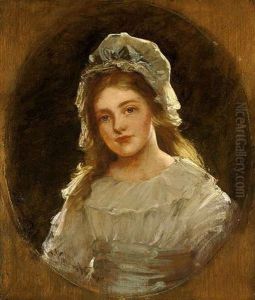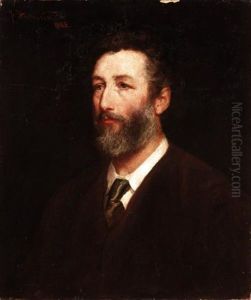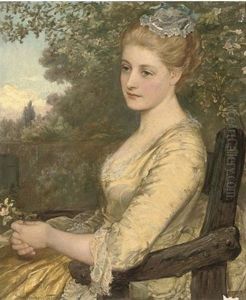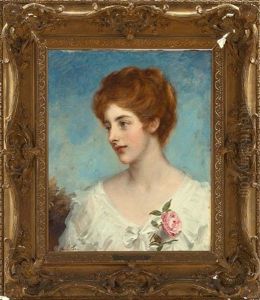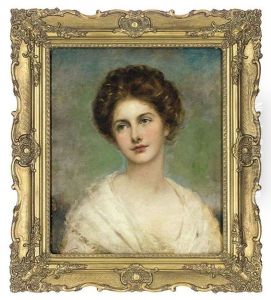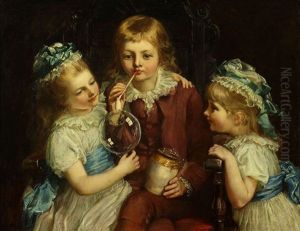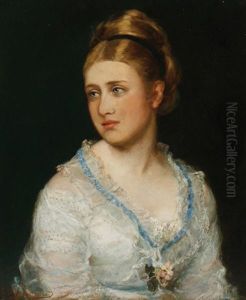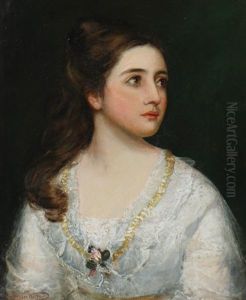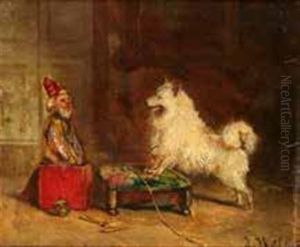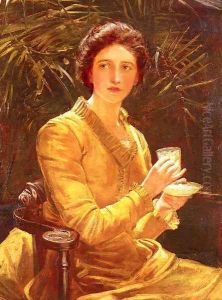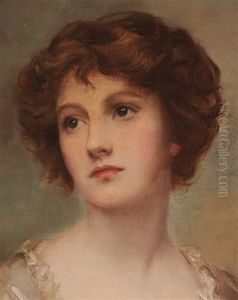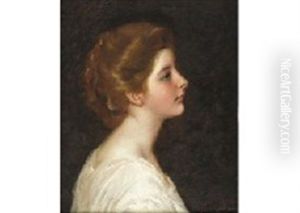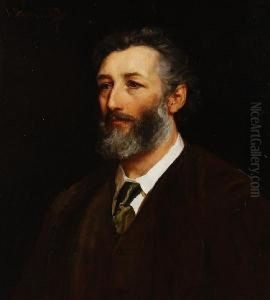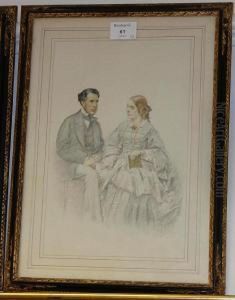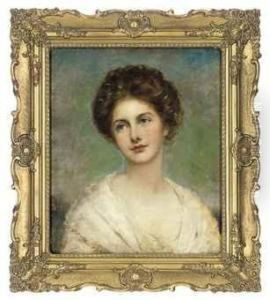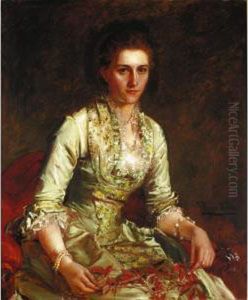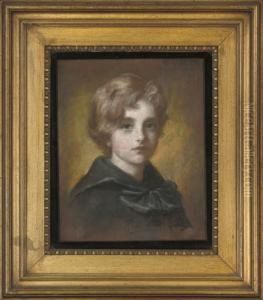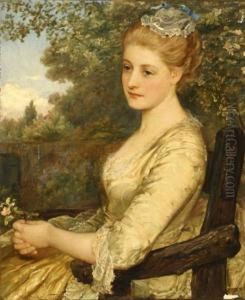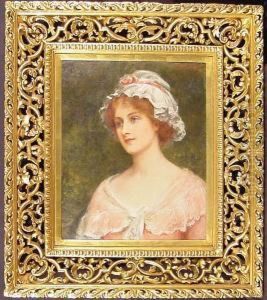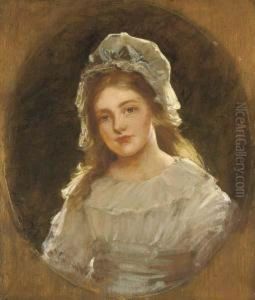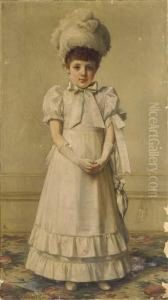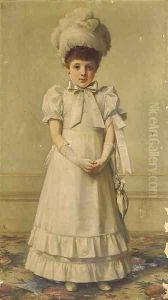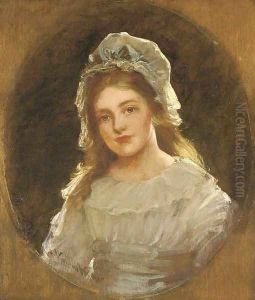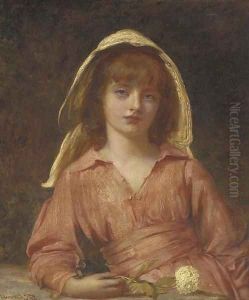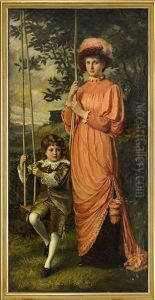John Hanson Walker Paintings
John Hanson Walker was an English painter known for his genre scenes and portraits, embodying Victorian sensibilities and aesthetics within his work. Born in 1844 in Leeds, Walker demonstrated an early aptitude for art, which led him to pursue formal training. He studied at the Royal Academy Schools, a prestigious institution that provided him with a solid foundation in the classical traditions of painting.
Walker's career took shape in the latter half of the 19th century, a period marked by a fascination with domestic and sentimental subjects among the Victorian public. His paintings often depicted scenes of everyday life, imbued with a sense of idealism and moral virtue, characteristics that resonated with his contemporaries. He was particularly adept at capturing the nuances of light and shadow, employing them to enhance the emotional depth of his scenes.
Despite the popularity of genre painting during his early career, Walker also achieved recognition as a portraitist. His portraits are notable for their detailed realism and psychological depth, qualities that earned him commissions from various notable figures of his time.
Throughout his career, Walker exhibited extensively, including at the Royal Academy of Arts in London, where he was well-received by critics and the public alike. His works were celebrated for their technical skill and their ability to capture the essence of Victorian life and morality.
As the 20th century dawned and artistic tastes evolved, Walker's style fell out of favor with the avant-garde, who were moving towards Modernism. Despite this, he continued to paint and exhibit until his death in 1933. Today, John Hanson Walker's paintings are appreciated as valuable documents of Victorian society, offering insight into the era's culture and values. His work is held in several British collections, testament to his skill and enduring appeal as an artist.
